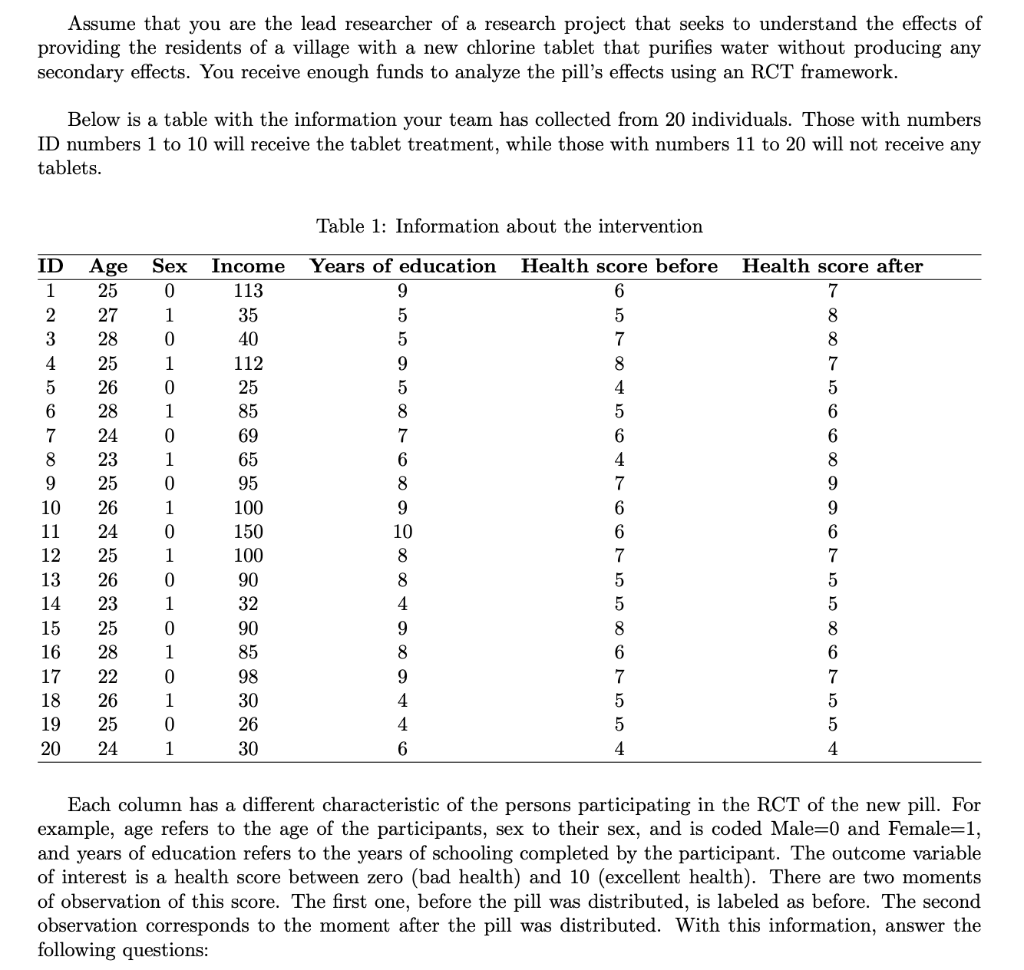

Assume that you are the lead researcher of a research project that seeks to understand the effects of providing the residents of a village with a new chlorine tablet that purifies water without producing any secondary effects. You receive enough funds to analyze the pill's effects using an RCT framework. Below is a table with the information your team has collected from 20 individuals. Those with numbers ID numbers 1 to 10 will receive the tablet treatment, while those with numbers 11 to 20 will not receive any tablets. Table 1: Information about the intervention Each column has a different characteristic of the persons participating in the RCT of the new pill. For example, age refers to the age of the participants, sex to their sex, and is coded Male =0 and Female =1, and years of education refers to the years of schooling completed by the participant. The outcome variable of interest is a health score between zero (bad health) and 10 (excellent health). There are two moments of observation of this score. The first one, before the pill was distributed, is labeled as before. The second observation corresponds to the moment after the pill was distributed. With this information, answer the following questions: Question 2 An alternative to estimate the causal effect (if the condition from question 1 in part 1 is fulfilled) is to estimate a regression between the outcome variable of interest and a binary variable that indicates who gets treated and who does not. Namely, a binary variable D, with D=1 if the individual receives the treatment and D=0 if the individual does not. Thus, the regression to estimate is the following: yi=0+1Di+uii 1. Based on the information from the table above, estimate the slope and the intercept coefficients 2. Consider that the formula for the standard error of the estimator of the slope coefficient is the following SE(1)=i=1n(DiD)2n21i=1n(yiy^i)2 Calculate the standard error of the estimate of the slope coefficient. 3. Is the slope coefficient statistically different from zero? Perform the appropriate hypothesis test to find out. 4. Is the estimate of the causal effect from the previous question equal to the estimate of the slope coefficient








